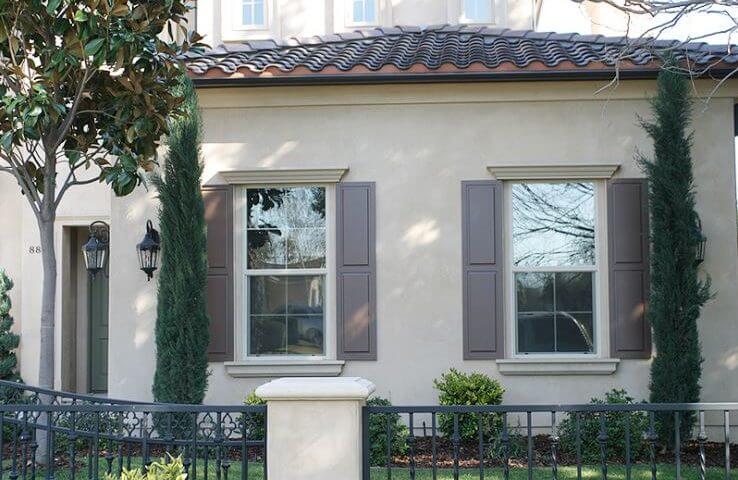- Contact Us Today
- (760) 598-6422
- Get a Quote
Why is There Condensation on my Windows

Have you ever noticed small drops of water on the inside of your window panes? This is called window condensation, and it occurs when warm, moist air comes into contact with a cold surface. While window condensation is perfectly normal, it can be a nuisance, especially if it results in water stains on carpets or furniture. So why does window condensation happen? It all has to do with the temperature of the glass. In winter, the glass in your windows gets cold from the outside air, causing the moisture in the indoor air to form droplets on the surface. The good news is that window condensation is usually nothing to worry about. However, if you notice that your windows are constantly foggy or dripping with water, it could be a sign of a more serious problem, such as a leaky roof or faulty insulation. If this is the case, you should contact a professional for assistance.
Window condensation is a common issue for homeowners. In some cases, it’s normal and healthy but there are certain instances where you might want to get San Diego replacement windows installed if the repeated occurrence of window condensation. Here is some information on why there is condensation on your windows when you should start worrying, and what you should do about it.
Causes of Temporary Window Condensation
There are several things that can cause window condensation including:
- High humidity from cooking or dishwashing
- Running the clothes washer or dryer
- Hot showers or baths
- The sudden drop in temperature outside
- The start of the heating season in the winter
- Fish tanks or potted plants close to a window
The Formation of Condensation
You have probably noticed the mirror in the bathroom fog up after a steamy shower. Or seeing a window in the kitchen cloud after cooking on the stove. Or noticed water condenses on the outside of a cold drink on a hot day. The basics of these phenomena are the same. Warm air carries more moisture. But when the warm air comes in contact with a cold surface it cools and must release the moisture, causing condensation. This is why condensation is common, and not usually a major concern when it happens once in a while on your windows. It often dissipates on its own, no harm done.
How Much Condensation on Windows is Normal?
It’s normal for windows to have condensation on them, especially during colder weather. The amount of condensation will vary depending on the temperature, humidity, and type of window. In general, the more moisture in the air, the more condensation there will be. However, if you notice excessive condensation or any water dripping down the window, you may want to take action to reduce the amount of moisture in your home.
When is Condensation on My Windows a Concern?
If you have a window in your home that is constantly fogging over this can be something to worry about. You don’t want water always dripping down the glass, into the frame, and seeping into the walls. It can cause rot, mold, and structural damage if enough moisture gets into the walls. You can increase ventilation and run exhaust fans in your home to limit humidity. Or you could invest in a dehumidifier to try and maintain proper humidity in your home.
There is another type of window condensation you should worry about—fogging between the panes of glass. Have you ever gone to wipe away a smudge on a window only to discover you can’t? This means the seal on your insulated glass unit (IGU) is broken, the special gas has leaked out and been replaced with normal air that also contains moisture. So in addition to the condensation between the panes, you might also notice drafts or an increase in your energy bills. Unfortunately, the only way to really correct this problem is with energy-efficient replacement windows.
If you have windows causing you concern, call us at (760) 598-6422. We can offer a free, in-home evaluation and consultation about window replacement in San Diego, CA with no pressure to buy. The products we offer are unmatched in quality and energy efficiency. They will not only solve your condensation problems but provide several other benefits as well. So let the experts at Pelican Replacement Windows help you out. Stop by 2210 La Mirada Dr., Vista, CA 92081 to check out some of our products today.
Replacement Windows FAQs
How to Open Basement Windows?
There are a few different ways that you can open your basement windows, depending on their individual design. If your windows have handles, you will simply need to turn the handle in order to open them. If your windows do not have handles, then you will need to lift them up from the bottom in order to open them. Some windows may also have a locking mechanism that you will need to disengage before opening the window. Once you have opened your basement windows, be sure to prop them open with something like a wooden dowel or plastic stick so that they remain open while you are working in the basement.
Can Glass be Replaced in Vinyl Windows?
Yes, glass can be replaced in vinyl windows. In fact, many replacement window companies offer replacement glass for vinyl windows. The process is relatively straightforward and can be completed in a few hours with basic tools.
Do All Double-hung Windows Tilt in for Cleaning?
No, not all double-hung windows tilt in for cleaning. It depends on the window’s design and construction. Some windows have a tilting sash that allows the bottom pane to move inward so you can clean the glass, while other windows have a removable sash that you can take out so you can clean the glass from both inside and outside of the window.

